What can get lost in thinking about the Outer Banks is how complex the systems are that create the beauty of the area.
There are hidden gems that almost seem to get lost in the big story of the Outer Banks—places of beauty and extraordinary complexity.
Run Hill, a North Carolina State Natural Area, is one of those places. It’s definitely off the beaten track. There’s no visitor’s center, no marked trails—in fact, just trying to find information about it can be tough. But it is worth the visit.
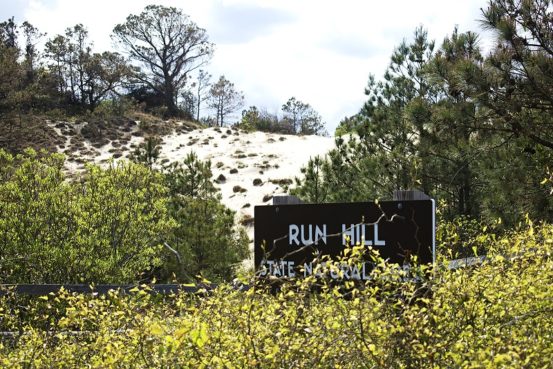
The entrance is at a somewhat hidden sign on 10th Avenue in Kill Devil Hills. Go to the end of Landing Street. When Landing Street ends, turn right onto 10th Avenue. Just before 10th Avenue ends at Compton there’s a strip of dirt on the left side of the road big enough for maybe three cars to park. That’s the entrance.
What will be obvious immediately is that Run Hill is a massive dune complex. There will be a very steep climb up the dune immediately upon entering the area. It’s worth the climb.
Looking north from the top of the dune, the Wright Brothers Monument dominates the skyline.
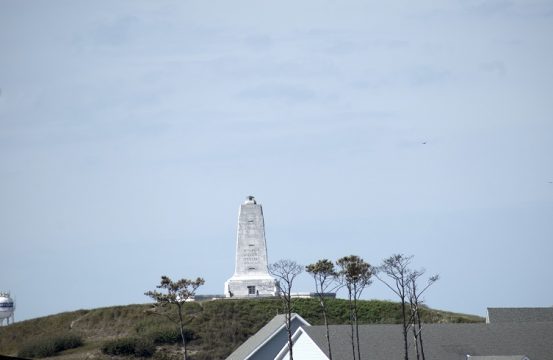
The monument rests on top of Kill Devil Hill, one of a series of sand dunes that at one time extended north from where the Nags Head Manteo Causeway is now to the Wright Brothers Memorial and beyond to Kitty Hawk. That line of dunes includes Jockey’s Ridge State Park, which administers Run Hill. The area south of Jockeys Ridge has been leveled now, but at one time it was a series of sand dunes called Seven Sisters.
Run Hill is the northernmost natural dune remaining in the complex. It’s a relatively small area—just 127acres, but wandering among the peaks and valleys of the system it seems larger.
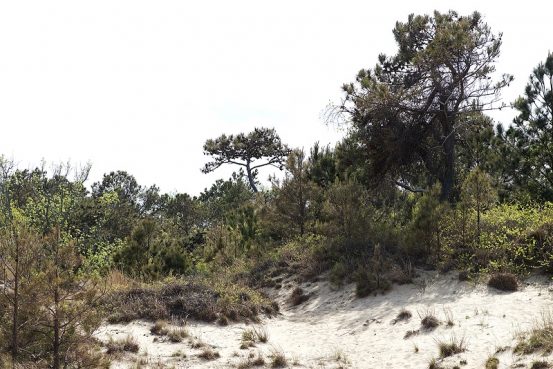
Jockey’s Ridge is the other natural dune still remaining in this area of the Outer Banks.
Typical of a living dune system on the Outer Banks, the east-facing slope of Run Hill is barren. That is the face of the dune that takes the brunt of the east and northeast winds that howl off the ocean, and it is the combination of the ferocity of the winds and salt infusion in the air that keeps vegetation from growing.
Certainly sand is not the most fertile soil but it does support plant life. Almost as soon as the top of the first dune is crossed, the vegetation becomes more common and there are even a few pine trees that have taken root.
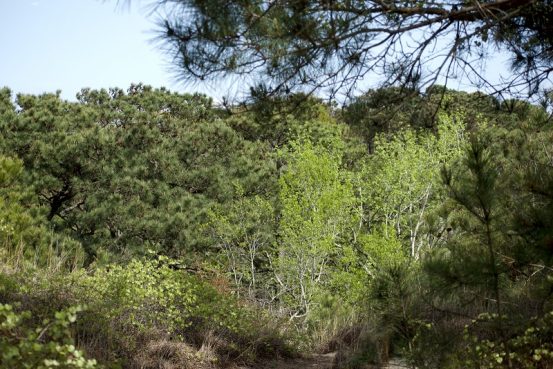
Nags Head Woods borders the dune system to the south and the transition from dense maritime forest to dune is startling. Typical of an active dune system, Run Hill varies in height, but it’s usually around 55-60’ above sea level.
The slope is very steep and looking into Nags Head Woods there are some very interesting things to see.
It is not always apparent but look carefully into the vegetation that is Nags Head Woods on a sunny day and open areas of standing water can be seen. Inside Nag Head Woods there are a series of freshwater ponds; at one time those ponds were the water supply for the Outer Banks.
The fresh ponds at the base of Run Hill are formed by two actions—aquifers are so close to the surface in this area that the ponds are actually the aquifers as open water. Runoff from Run Hill also contributes to the ponds immediately at the foot of the dune.
Also apparent looking into Nags Head Woods is the diversity of tree species is far more diverse than the pines that have sprung up on Run Hill.
Although not verdant, especially compared to Nags Head Woods, the plant life in protected areas of the dune is surprisingly diverse.
Some of the wild flowers are exquisite. Look for a delicate appearing plant with a small blue to purple flower on a thin stem. That’s a blue toadflax. Or the spectacular scarlet-colored, trumpet-shaped flower with the yellow stamen is trumpet honeysuckle.
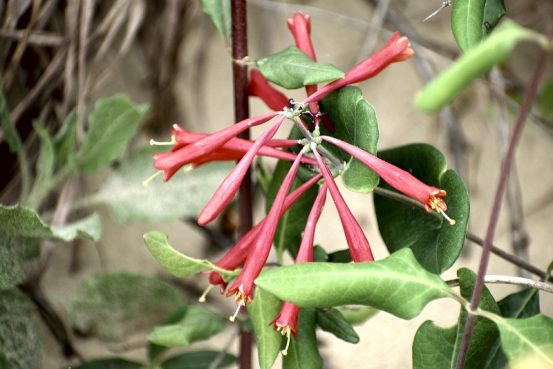
The western edge of Run Hill offers a spectacular view of Buzzard Bay as it opens into Albemarle Sound.
Buzzard Bay is an apt name. On a warm day—especially with a breeze from the southwest, buzzards will soar over the western edge of Run Hill, taking advantage of the combined uplift created by the wind and the warm sand of the dune.
It is remarkable how much there is to explore in what is, after all, a fairly compact area. There are, for example, deep bowls among the crest of the dunes. Those are called blowouts and they are completely natural.
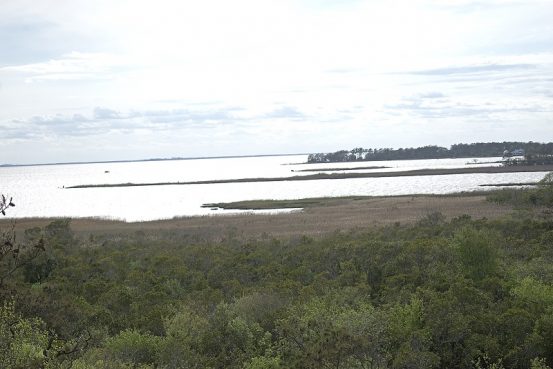
There are a number of ways they may have formed, but given where they are located, wind was an important factor, perhaps by scouring plant life and destabilizing the sand.
Run Hill is a fascinating place to explore and worth a couple of hours on a nice day. Take a camera and, especially during the summer, some water.
A tip to keep explorers oriented: Although small in size, landmarks can get easily lost, but one landmark that is impossible to miss is the high tension lines that run across the crest of the dune. The power lines are oriented due north and south.
